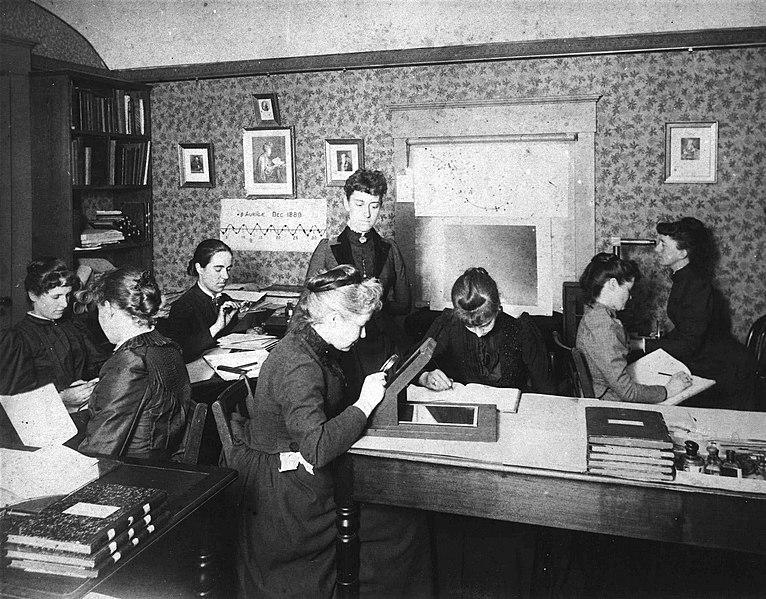
Date:
You've likely heard of the 'women computers' working in the space program in the early to mid-1900s through the film Hidden Figures. but did you know that there were 'computers' in other fields?
Women 'Computers' in Astrophotography
Astrophotography, the practice of using photographs to study the night sky, came into being in the mid-1800s. By the end of the century, developments in photographic technology enabled more detailed views of celestial bodies. Unlike looking through a telescope, photographs provided a clearer view of the night sky, and they could be referred to and studied over and over again. In the 1880s, the director of the Harvard Observatory, Edward Charles Pickering, implemented the use of this new technology. However, it quickly created a new problem – there was too much data in the photographs for his staff to analyze. Unimpressed with his assistant’s work, Pickering fired his assistant and hired his maid, Williamina Fleming, to take his place. Fleming would go on to supervise other women working in the observatory; because of the calculations that they did, these women were known as “computers.”
What Computers Did
During Pickering’s tenure from 1877 to 1919, more than 80 women worked as computers in the Harvard Observatory. Working with the images and compiling the data was tedious, and was seen as a task for a cheaper, less-educated workforce. Women were paid considerably less than their male counterparts, but many women were excited for a chance to break into a male-dominated field; some women even offered to work for free. Computers served different roles in the Observatory: reducing the photographs to make them clearer to see, classifying the stars in the photographs by comparing them with catalogs of known constellations and classifying the actual photographs. On rare occasions, some women were allowed to make observations using a telescope.
While many people don’t know about them today, the work of the computers was invaluable. Later theoretical work in astronomy would not have been possible without the work that they did. Women like Antonia Maury, Florence Cushman, and Henrietta Swan Leavitt are all remembered for their significant contributions to the field. While she wasn’t a computer herself, Antonia Maury’s aunt, Mary Anna Draper, also made major contributions – after her husband (an amateur astronomer) died, she funded Pickering’s work and donated her husband’s telescope to the Observatory. She also funded an expedition to see the total solar eclipse in 1900.
Harvard Classification Scheme
The most well-known woman to work at the Harvard Observatory was Annie Jump Cannon, who was famous as an astronomer in her lifetime. Building on the work of fellow computers like Antonia Maury, Cannon created the Harvard Classification Scheme, a system of classifying stars. In 1922, the International Astronomical Union adopted the Harvard Classification Scheme as its official classification system. Every year, the American Astronomical Society presents the Annie Jump Cannon Award to a female astronomer for distinguished work in the field, carrying on the legacy of pioneering women studying the night sky.


